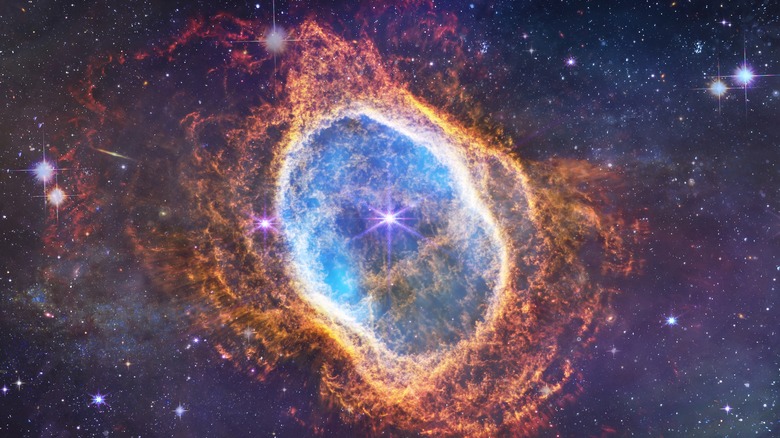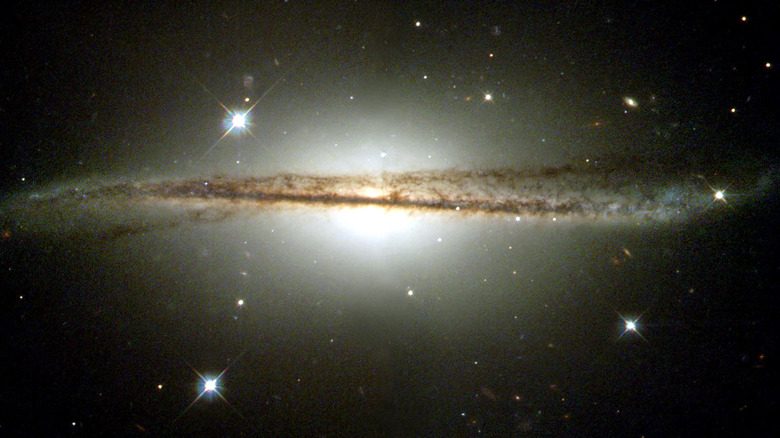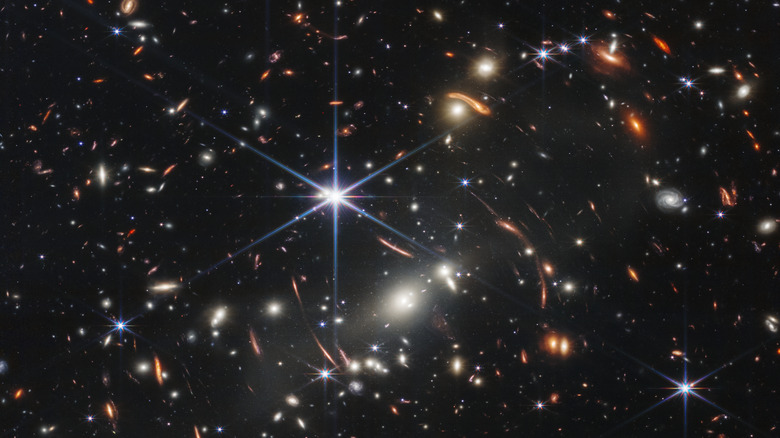Here's Where Stars Go When They Die
Glancing above, it seems like the hovering stars go on for eternity. But they don't. Like everything else around us, stars are temporary fixtures, constantly shifting, reshaping from gas clouds to red stars to white dwarfs. Such is the life cycle of a star (per Space). According to Sky & Telescope, the natural end to this life cycle is death, which can happen one of two ways over the course of millions, billions, or even trillions of years. Larger stars collapse at their core, exploding into luminous blasts of radiation known as supernovas. Smaller stars, on the other hand, turn into dwarf stars, which eventually collapse into black dwarfs and fade into the background of the Milky Way.
If you've ever wondered where stars go when they die, you're not alone. Recently, scientists discovered an intergalactic graveyard covered in ancient, dead stars, and it's every bit as ghastly as it sounds (via CBS News).
A galactic graveyard of dead stars was just discovered
Scientists refer to this star graveyard as the "galactic underworld" in a news release reported by EurekAlert!. The peer-reviewed study — published in the Monthly Notices of the Royal Astronomical Society — covers the course of corpses from ancient dead stars that collapsed on themselves, leaving behind neutron stars and black holes. Until now, scientists had no idea that these primordial star corpses were being tossed right out of the galaxy by the very supernovas that created them in the first place. The end result is a kind of dead zone in interstellar space where star remnants and corpses abound.
CBS News reports that these remnants are comprised of stars that were once about eight times the size of our planet's sun. Many of them were created billions of years ago, only to be cast aside once they'd run out of fuel. Not only are these stars dead, but study authors say approximately 30% of them were "completely ejected from the galaxy," making this star graveyard the most final resting place imaginable.
The galactic underworld is quite large and pretty warped
In case you were wondering just how much space it takes to store the remnants of dead stars, imagine a place as tall as the Milky Way and then multiply its height by three. This is the height of the galactic underworld, according to CBS News. However, when it comes to metrics, that's just scratching the surface. The same study explains that the side view of the graveyard exhibits thoroughly different dynamics (via EurekAlert!). It seems its center is extremely inflated as a result of a surplus of kinetic energy being emitted by the supernovas.
In reality, the sheer size of the galactic star graveyard is incalculable because, according to the study's authors (via EurekAlert!), "stellar corpses warp space, time, and matter around them". According to SyFy, dead stars really do a number on the spacetime continuum, their astronomical size appearing to rip apart the very fabric of space, giving way to frame dragging. This occurrence has prompted some to believe time travel through frame dragging could be made possible if one were able to create a loop across the fourth dimension, according to ThoughtCo.
Will time travel from a galactic stellar graveyard be a thing in the future? Only time and maps can say for sure.
Galactic maps and stellar ghost hunting are already underway
Like many great things, this whole adventure began with a map of the stars and somehow ended with scientists chasing down the ghosts of ancient stellar corpses (via CBS News). EurekAlert! reports that this map of the galactic underworld was crafted by following the lifecycles of these ancient stars that now lie in ruin. One thing that the scientists found shocking was how different the stellar graveyard looked in contrast to the rest of the universe. The intense energy surrounding the ancient lackluster stars has given this section of the Milky Way a faded appearance. The atmosphere is blurry, and even the spiraling arms of the Milky Way itself are obscured.
Now, scientists and astronomers have set their sights on hunting down the ghosts of these ancient stars. It sounds far out, but they've already gone so far as to develop new technologies with this precise task in mind.



